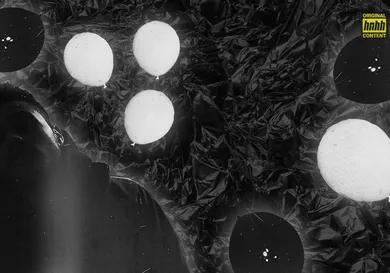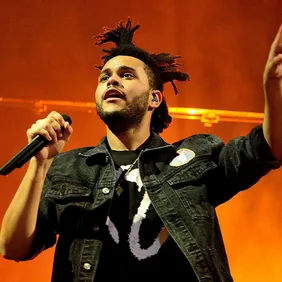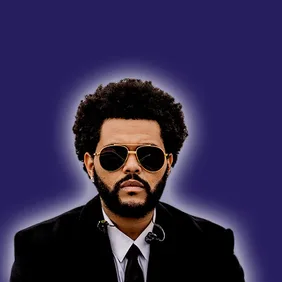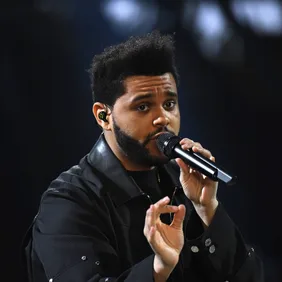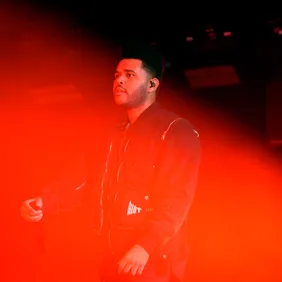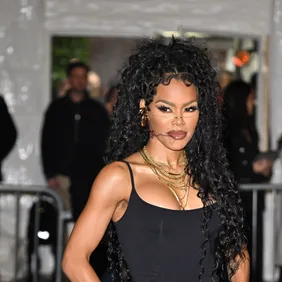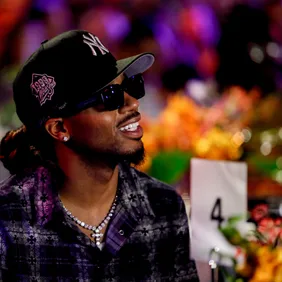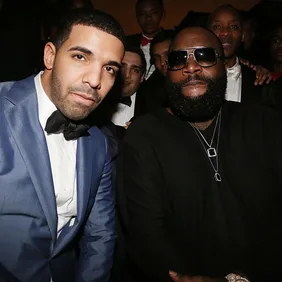With age often comes the realization of time. A span of time, a decade for example, seems infinitely long and difficult to grasp when you’re 9 years old. When you’re 30, it often feels like ‘yesterday’-- the contents therein blurring, but still identifiable by certain landmarks, such as a favorite song, an album, a friend, a girlfriend, an event. And thus, we’re often left with a sense that the passage of time is somewhere between transient, meaningful and efficient, though it’s not something we necessarily understand in the moment.
For many millennial-aged-fans who have grown with The Weeknd since his debut, House of Balloons, you may be coming to this realization today, considering that the ground-breaking album was released exactly ten years ago. It was in March of 2011 that Abel Tesfaye jump-started an r’n’b evolution, one which we’re seeing peak presently. A vibrant, rich, and engaging landscape that has not only become a focal point within pop culture at large, but one that dictates other sonic trends while keeping a firm grasp on the listening-public’s interest. It was four years after House of Balloons’ initial release that Abel first considered this could be happening; during a 2015 interview with Rolling Stone he mused: “People tell me I’m changing the culture.” Then, five years after that, in his most recent interview to-date with Variety, Abel finally laid claim to what was always suspected: “House of Balloons literally changed the sound of pop music before my eyes.”
Brian Rasic/Getty Images
---
During the 2009-2011 era, a time considered to be the height of the “blog era,” hip-hop music was both thriving and changing. Those first few artists who broke-out on popular blogs between ‘07 and ‘11 have since gone on to become bonafide stars (think: J. Cole, Drake, A$AP Rocky, Tyler, the Creator). However, where hip-hop was in a transformative state, the genre of r’n’b was a bit more compact, and at a different phase of its life.
The genre still had its fair share of worthy contenders to be sure, some veteran and some new. The-Dream was crafting his own lane with uniquely modern and lush productions. Frank Ocean’s debut, similarly timed to Abel, was bringing his own brand of emo-tinged r’n’b to the fore, and then we had more modern players like Trey Songz, Jeremih, Miguel, and Chris Brown. However, the list of artists worth mentioning-- those pushing the genre forward in a meaningful way-- were fewer and far between than our present-day expanse. In this new generation most, if not all, have some sort of underlying Weeknd inspiration or influence. This is because The Weeknd’s influence spans from sound to cadence, lyrical matter to aesthetic -- even marketing.
It all begins with House of Balloons. While it’s certainly been influential across music and pop culture en masse, there’s also a good chance that the album served as personally influential in any given XO fan’s adolescence. I’m referring to that specific era of young adulthood, which coincided with Abel’s own youth at the time-- he was 17-years old when he dropped out of high school and left home. House of Balloons is the type of project that could only be created during this particular phase of one’s life-- the post-18 threshold, where there's an immense amount of freedom and few real responsibilities. It’s also a time that can be emotionally-charged, as you navigate friends, sex, parties, and drugs -- all themes that would become fodder for Abel’s music, and themes which seemed previously unexplored under the r’n’b umbrella.
Speaking with TIME magazine in 2018 about why the music resonates so strongly with this specific generation of young adults, Abel acknowledged the intense connection between Trilogy and the generation known as millennials. The singer connected it to the emotions we were all feeling during that time of our life. “The definition of the love we feel, or what kids and 20- and 18-year-olds are going through,” he said. “That music is special, and I feel like it’s what people need.”
This is why I’ve personally come to know HoB as one of those heavily-nostalgic audio landmarks we discussed earlier, putting into focus the slosh of passing time, and a picture of where I was, and how far I’ve come, since my own introduction to the then-mysterious artist.
---
It started with an image. The black and white album cover for House of Balloons. Its bold Helvetica font could have easily doubled as an American Apparel ad or else some sort of faux-vintage vinyl cover-- the naked girl, balloons covering her face, bony arms jutting out of a bathtub. The cover was immediately striking, memorable, and simply put cool. It was poster-worthy, whether that be a wall in your bedroom, your computer desktop background, ‘Liking’ it on Facebook or re-posting it on your Tumblr moodboard. It was something worth adding to your personal online or IRL ‘collection,’ something to show friends, and say, yes I found this, this is something I like, itself signifying the type of person you are, and your “status” within the pop culture landscape.
This was also at a time when the internet was still coming into its own, as far as its many uses go. Social media platforms were on the rise, although, the platforms du-jour were more along the lines of Tumblr and Facebook; MySpace had started its descent; Instagram was only a year old and Twitter was just beginning. Nonetheless, a platform like Tumblr foreshadowed what would become a growing emphasis on the visual-- and the idea of image-sharing-- which of course became the main tenet of Instagram. Thus, The Weeknd had cornered an aspect of youth-driven internet culture instantly with his House of Balloons album cover. The Weeknd made it aesthetically easy for fans to want to claim his music, and either cling to, or broadcast, his underground status at the time-- which made it all the more cool to like him, while spreading the word.
“Is it just pure aesthetic appreciation?” posed the Village Voice in their 2011 piece, entitled, “Love vs. Money: The Weeknd, Frank Ocean, and R&B’s Future Shock.” Like many pieces that reported on The Weeknd’s debut at the time, the writer was unclear if The Weeknd was a singular person or a group-- leaving the artist to often be referred to as “they” in his primary publication appearances. This was another part of The Weeknd’s business model. The confusion surrounding his identity wasn't only because of the lack of information he revealed about himself (none, at that point). ‘The Weeknd’ as a moniker was confusing-- with the determiner seemingly indicating that it *must* be a band, not to mention the simple fact that he named himself after the weekend. What did it even mean? And he dropped ‘e’, too. In present-day hip-hop and r’n’b, across graphic design and branding trends in general, we’ve become familiar with artist names, song titles, or album titles, where a vowel has either been dropped or altered in some way. When The Weeknd did it, this was not yet a full-blown trend, it veered into unfamiliar territory. Abel was preceded only slightly by companies like ‘Tumblr’ and ‘Flickr’, who opted to go without vowels for the sake of trademark and domain name, as well as a way to establish branding identity.
The Weeknd’s business model goes beyond his sense of aesthetic and its impact, however. His idea to release three free albums back-to-back in the span of a year has spawned imitators in small and large artists alike-- The Weeknd himself observed in his Rolling Stone interview that “No one can do a trilogy again without thanking the Weeknd. A lot of artists started doing things faster and quicker after that: Justin Timberlake dropped two albums in a year, Beyoncé dropped a surprise album [...] I’m not gonna say any names, but just listen to the radio. Every song is House of Balloons 2.0.”
In today’s musical climate, it's a common trope for a new or fledgling artist to inundate fans with music out the gate, while all stature of artist seems beholden to drop two projects in a year, at the very least. It’s not impossible to trace this idea back to The Weeknd’s Trilogy, beginning with HoB. Of course, there have also been thinkpieces dedicated to the fact that The Weeknd gave out all this music for free. However, for those of us with roots in hip-hop, this particular way of receiving music didn’t seem so foreign. We were used to receiving free mixtapes via download on the internet, and a trend had even started in the mid-2000s to veer towards mixtapes that included more original production and fewer borrowed beats. The Weeknd simply sped up this evolution. What surprised fans was the feeling of complete-ness that House of Balloons provided, the raw, but still very defined sense of style and vision that came with it. This was purported to be a “debut mixtape” but it was like an album. The production was entirely original. The artwork, tracklist sequencing and details therein provided a true album experience, regardless if the music was free. So it began that labels such as “album” or “mixtape” were used interchangeably, often the only deciding factor being the artist’s whim.
Vallery Jean/WireImage/Getty Images
---
There was another blurring of lines happening around this same time. By 2011, Drake had taken to bleeding r’n’b into his music, his cue eventually followed by the rap game at large. At the time, r’n’b-tinged songs like “Best I Ever Had” and “I Just Wanna Be Successful,” helped the upcoming rapper make his mark. It was clear early on that Drake was striving for something new-- and it would appear that his introduction to The Weeknd, which would eventually serve as our introduction to The Weeknd, helped satisfy this itch, going on to influence his music and his sophomore album, Take Care.
While Album Drake has been known to squander potential, Take Care is still probably *the best* album he has put out to date. The Weeknd had his fingerprints all over it-- “House of Balloons was actually supposed to have more songs than it does. I had so many records left, and then Take Care came through. “Crew Love,” “Shot For Me” and “The Ride” were supposed to be on House of Balloons. I wanted to come out with like 14 records. I felt like “The Ride” was the last one, and it wasn’t done yet. [Drake] heard it and he was like, ‘This shit’s crazy,’” The Weeknd told Complex in 2013 while discussing several of the Take Care fan-favorites, including “Practice,” where he revealed: “That whole hook was me. That’s probably the only song I wrote for Take Care. The rest of it was just shit I was going to have for [House of Balloons].”
Ollie Millington/WireImage/Getty Images
Nonetheless, Abel insisted that his influence on Drake was itself sparked by Drake’s influence on him: “He really wanted to incorporate my sound, which was inspired by his sound. It’s not like, ‘Oh, I had the ‘new sound.’ It was just easier for him to relate to me, because it was his sound with an edge. It was that Toronto sound,” the singer stated in the same interview. While this may be true in the sense that, Drake made Toronto a viable city for both hip-hop and r’n’b to thrive-- which allowed someone like The Weeknd to find success in the first place; it’s also untrue in the sense that The Weeknd’s sound could only be described as new.
Illangelo and Doc Mckinney, namely, formed the base of the Weeknd’s XO production team, responsible for much of the Trilogy’s sound. Often where one appeared, so did the other-- be it in writing or production credits, the two were invaluable in engineering The Weeknd’s cinematic sound. They opted for obscure ‘80s and ‘90s rock or pop records to build their production over, inherently appealing to the cool alt-indie-rock era that had preceded the rise in hip-hop as the dominant genre of the mainstream-commercial youth.
“The production is very cinematic for me, and R&B was never cinematic like that,” explained The Weeknd when speaking to his HoB music, in the same Complex interview. This approach to music has continued to carry The Weeknd’s vision, up until his most recent album, After Hours. The title was not only inspired by the 1985 Martin Scorcese film of the same name, but there was an entire plot and story-line that unfolded alongside the album roll out.
In the days of HoB, this cinematic influence may have been less evident, however it’s still an apt word to describe the Trilogy-era music. The Weeknd’s brand of intoxicating/intoxicated nightlife music became the soundtrack for debauchery, for late-night and early-morning antics, and for drug-use, simply put. Even if you weren’t doing drugs, HoB was cinematic in the way it made you feel, the production itself a journey full of highs and lows; a glossy veneer in the process of decay, only to reveal a film of grime underneath.
It’s in this space that The Weeknd found both his inspiration and his influence. The Toronto native remodeled what it meant to be a fan by creating music that coincided or identified with a specific lifestyle and time’s in one life, thus sparking the cult-like XO fanbase, and creating a blueprint for artists when it comes to the importance of branding identity and having a "movement." However, beyond a savvy business strategy, Abel also refurbished an existing genre, spawned a new sub-genre, and encouraged experimentation and evolution in the generation of artists that have followed his lead.
